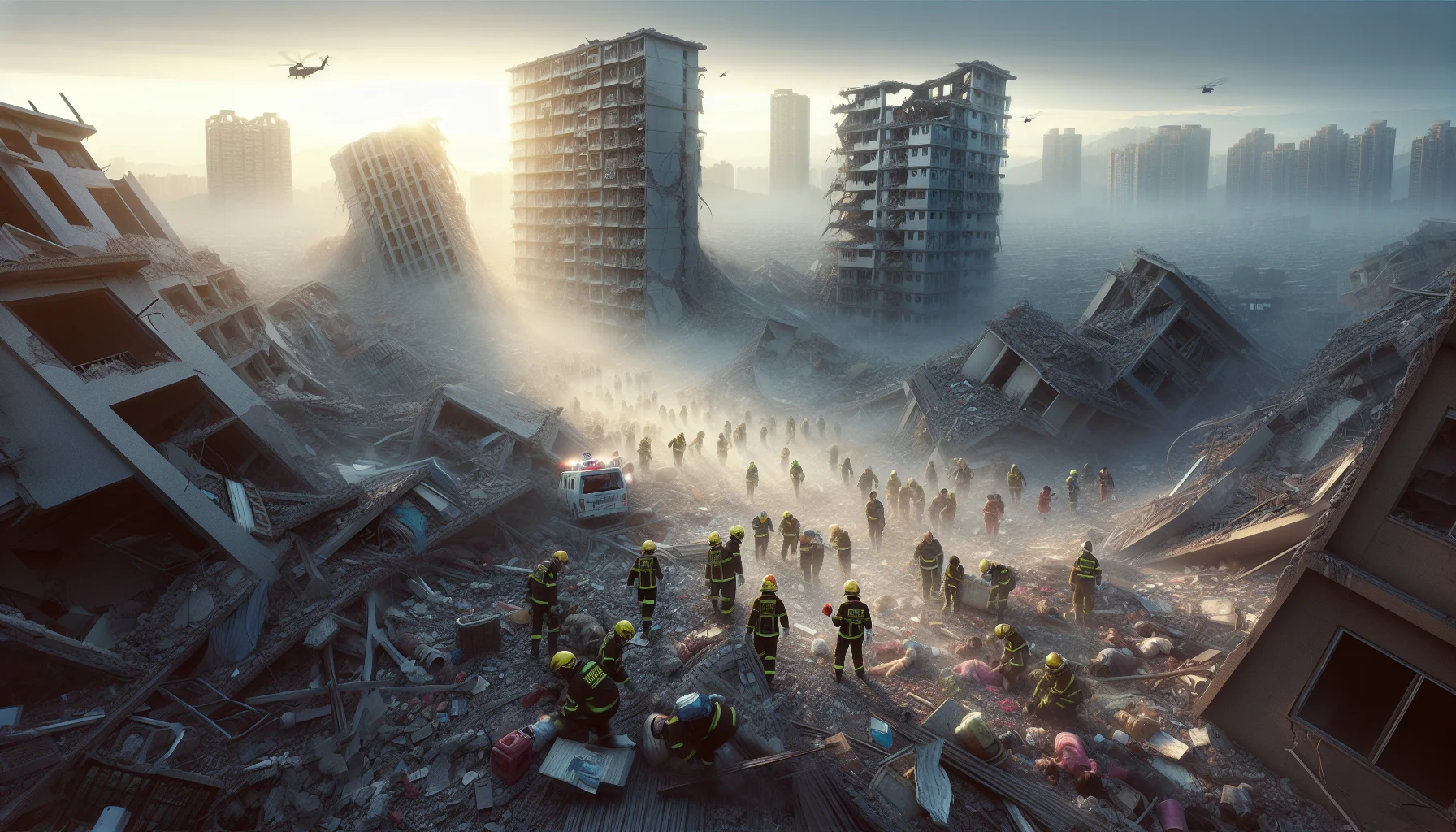
2016 Southern Taiwan Earthquake
by: The Calamity Calendar Team
February 6, 2016
In the shadow of Mount Yushan, as dawn broke over the tranquil town of Tainan, residents of southern Taiwan found themselves in the grip of one of nature’s most harrowing forces. On February 6, 2016, at 3:57 a.m. local time, an earthquake with a magnitude of 6.4 rumbled through the region, its epicenter located near the town of Meinong in Kaohsiung. This seismic event forever altered the landscape, both physically and socially, reverberating far beyond the shaking ground.
A Land Built on Shifting Plates
Taiwan, cradled between the Philippine Sea Plate and the Eurasian Plate, is no stranger to the twist and torque of the earth beneath it. A nation marked by its frequent seismic activity, Taiwan is well-versed in the language of tremors. Building codes here speak volumes about resilience, designed meticulously to withstand the violent shakes that sometimes erupt from the ground without warning.
However, the quake in early February was an unwelcome reminder of the inherent vulnerabilities that persist. Despite stringent building regulations, the quake’s impact on Tainan, a historical hub nestled away from the epicenter, was a testament to the challenges posed by older infrastructure and occasionally lax adherence to construction standards.
The Earth Shakes
In the early hours of that fateful morning, as most of Tainan's residents were deep in slumber, the earth stirred furiously. A force emanated from 17 kilometers beneath the surface, setting off tremors that pulsated outward. For Tainan, the city became the stage for one of Taiwan’s sobering natural tragedies.
As the ground shuddered, buildings teetered and some toppled, with the most catastrophic collapse occurring at the Weiguan Jinlong residential complex. Built in the early 1990s, this 17-story edifice came crashing down, setting off a desperate scramble to find and rescue the lives entwined within its fallen structure.
Chaos and Courage in the Rubble
As daylight streamed into the disaster zone, the full scale of the destruction became painfully clear. Emergency responders, along with a cadre of volunteers, rushed to the scene. The cacophony of sirens pierced the morning air as the sound of cranes and jackhammers mingled with voices shouting out in call and response across the debris-strewn streets.
Thanks for subscribing!
Rescue workers, donning dusty helmets, wove through the rubble, guided by voices or poignant silences that directed their efforts. Their faces bore witness to a shared resolve—a commitment to wrest more individuals from beneath the chaos of broken concrete and twisted metal. Underneath lay hopes hanging between life and loss.
Human chains formed, a testament to the community’s spirit of unity, conveying both the living in need of aid and the solemn passage of those who perished. Days stretched on as shift after shift braved the aftershocks, which battered the will, but not the resolve, of those determined to save as many lives as possible.
The Aftermath
The quake exacted a heavy toll on Tainan. A total of 117 lives were lost, a somber reminder of the fury unleashed by mother nature. Hundreds of people were injured, stretching the city’s medical resources and necessitating an extraordinary community response to care for the wounded and displaced.
Beyond the tragic human cost lay tangible economic repercussions. Infrastructure crucial to daily life—roads, bridges, water lines—sustained serious damage. The region was thrust into a mode of recovery that afflicted families, businesses, and the local economy as they scrambled to rebuild both structures and lives.
Cracks in the Foundation
In the wake of devastation, investigators uncovered unsettling truths about structural integrity. For the Weiguan Jinlong complex, its fate was sealed not solely by the force of the earthquake but by the compromises hidden within its very construction. The use of inadequate materials became apparent, with flooring and walls substituted by tin cans and foam, instead of robust concrete—an egregious breach of building ethics.
This revelation shook Taiwan almost as much as the quake itself. The news inflamed debates across the nation about building standards, responsibility, and the cost of cutting corners in construction. As legal actions ensued, those found responsible for this neglect faced charges of professional negligence, marking a pivotal moment in Taiwan’s journey toward safeguarding lives.
A Nation Rebuilds and Reflects
In the months and years following the earthquake, Taiwan underwent a period of introspection and reform. The loss became a catalyst for change, compelling the nation to examine its urban planning and disaster preparedness with renewed urgency. Rigorous reviews and reforms of building codes aimed to reinforce structures against potential future quakes, ensuring that safety regulations are not just aspirational but actualized.
For Tainan and Taiwan, the 2016 earthquake represents not just a moment of tremendous loss but a stringent call to action—one that demands vigilant attention to the forces shaping their existence and infrastructures. Despite the tremor’s grim legacy, it revealed a resilient spirit, turning tragedy into a foundation for continued evolution and, perhaps, greater security in the face of nature’s unpredictability.
Stay in the Loop!
Become a Calamity Insider and get exclusive Calamity Calendar updates delivered straight to your inbox.
Thanks! You're now subscribed.